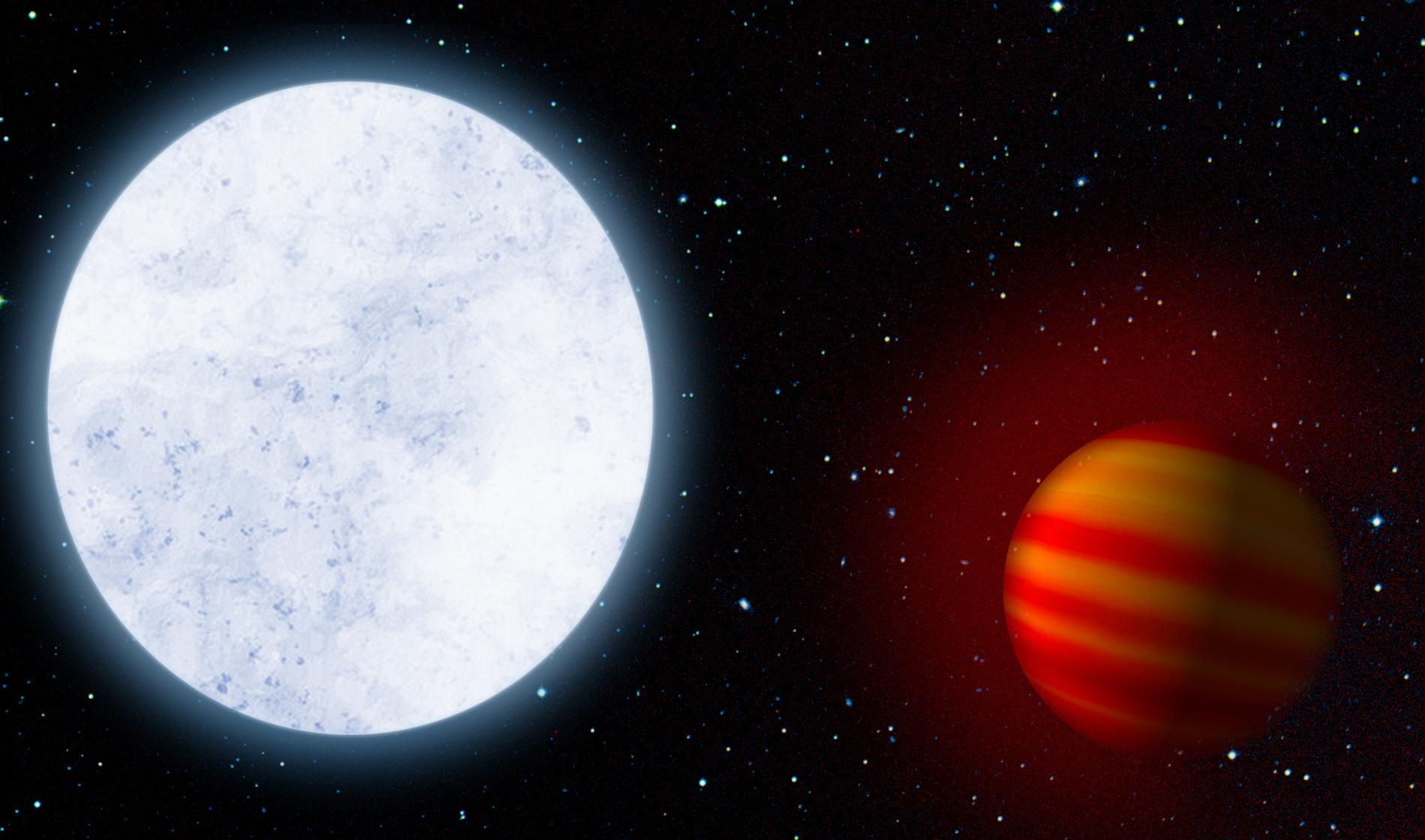The atmosphere of Kelt-9b, the hottest known planet, is being dragged towards its star
Similar to Jupiter, Kelt-9 is hotter than some stars. Thanks to the CARMENES instrument at Calar Alto Observatory, astronomers detected an extensive hydrogen envelope around Kelt-9b that escapes and is being captured by the star
The Kelt-9b conditions are infernal: it rotates extremely close to its host star, Kelt-9, whose temperature doubles that of the Sun. It is the hottest exoplanet discovered, and a recent study with the CARMENES instrument at Calar Alto, has revealed the presence of an hydrogen atmosphere around Kelt-9, which is being dragged and captured by the gravitational force of its star. Led by the Max Planck Institute for Astronomy, the result has been published in Nature Astronomy.
The temperature of Kelt-9 star rises to about 10000 degrees (the Sun reaches 5500 degrees), and its planet revolves around it in an orbit ten times smaller than Mercury's one around the Sun. Discovered in 2017, this planet, which has three times the mass of Jupiter and almost twice its diameter, shows a diurnal temperature of 4300 degrees, warmer than many stars.

Kelt 9-b was found by the method of transits, which consists in observing the small variations that occur in the brightness of the stars when their planets pass in front of them.
When observing the star Kelt-9 with the CARMENES spectrograph, installed in the 3.5-meter telescope at the Calar Alto Observatory, traces of the planet's atmosphere were found: each time the planet was in front of its star they could detect how its hydrogen-rich atmosphere absorbed part of the light from its host star. "CARMENES offers a particularly detailed and high-resolution view of the stellar spectrum, which makes it an excellent tool for this type of observation," says Pedro J. Amado, a researcher at the Institute of Astrophysics of Andalusia (IAA-CSIC) who has co-directed the development of the instrument.
The hydrogen atmosphere surrounding KELT-9b is surprisingly extended, equivalent to more than half the radius of the planet. The models that simulate how the star's gravity pulls the planet's gas show that it is close to its maximum size, and it is estimated that the planet is losing hydrogen at a rate of more than one hundred thousand tons per second.
"This result is a clear example of the potential of CARMENES, and this type of study is the basis of the next project we will carry out with the instrument," said Pedro J. Amado (IAA-CSIC).
F. Jan et al. "An extended hydrogen envelope of the extremely hot giant exoplanet KELT-9b". Nature Astronomy. March 2018
Instituto de Astrofísica de Andalucía (IAA-CSIC)
Unidad de Divulgación y Comunicación
Silbia López de Lacalle - sll[arroba]iaa.es - 958230532
http://www.iaa.es
http://www-divulgacion.iaa.es

